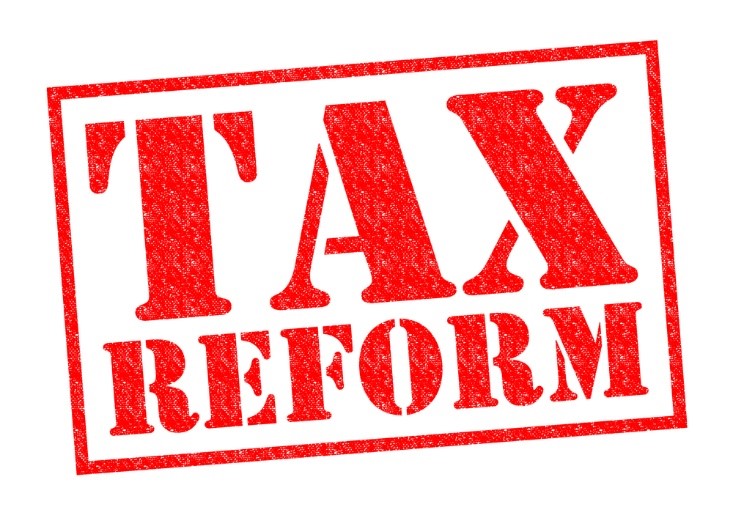
How The Tax Cut And Jobs Act Can Help The Middle Class Retire
 There is much heated discussion about whether the recently passed Tax Cut and Jobs Act of 2017 will help or hurt low, middle, and high earners. I try to avoid the politics and instead focus on the Bill’s impact on daily finances and how it can help people reach their specific goals.
There is much heated discussion about whether the recently passed Tax Cut and Jobs Act of 2017 will help or hurt low, middle, and high earners. I try to avoid the politics and instead focus on the Bill’s impact on daily finances and how it can help people reach their specific goals.
For lower-income workers, this Bill should have very little direct impact for most filers. Currently, about 45% of American households do not pay any federal income tax, and there is little in this Bill to raise that percentage. However, some potential indirect effects, such as the elimination of the personal mandate to purchase health insurance, could be felt later. By no longer requiring Americans to have health insurance (starting 2019), we may see fewer healthy people applying for coverage; this could lead to a less healthy pool of applicants, which could eventually raise health insurance premiums. Also, with the child-care tax credit, there are some changes that could mean a slight net benefit for some low-earning families. Overall however, the tax bill presents no significant, immediate financial impact for lower earners.
For those at the very top of the wage scale, this Bill is a significant windfall. Higher earners, especially those earning more than $500,000 per year, stand to gain the most in terms of actual dollar savings. However, a particular group of high earners may break even or see a slight tax increase: specifically, those earning from about $200,000 to $500,000 who file in high-tax states. Although their federal income-tax rates decline—and many will benefit from an expanded child-care tax credit (available for married couples earning up to $400,000 starting 2018)—they may lose valuable state, local, and property-tax deductions, which could have a net negative effect. This is why there has been such opposition on the part of legislators from high-tax states like OR, NJ, NY, CA, and CT. Conversely, if you are in this $200,000 to $500,000 income range and do not live in a high-tax state, you will likely be a winner in the tax bill. Regardless of whether it is fair, or even good public policy, the reality is that those earning more than $500,000 are the Bill’s biggest winners (along with corporations).
To be sure, calling this Bill a “middle-class tax cut” doesn’t speak to who gets the biggest benefits of this legislation (very high earners and corporations). However, the vast majority of the working middle class will get a lower tax bill in 2018. This underscores one of the important impacts of the Bill: many workers will have more money in their paycheck. And as most Americans consider themselves to be in the middle class (actual income ranges vary widely by family size, state, and other factors), let’s take a closer look at some numbers affecting this group.
In the Tax Cut and Jobs Act of 2017, there is a significant increase in the standard deduction (the dollar amount that non-itemizers may subtract from their income before income tax is assessed):$12,000 for singles, $18,000 for heads of household, and $24,000 for married couples. This increase is designed to offset the loss of the personal exemption and valuable tax deductions, namely state, local, and property-tax deductions. This increased standard deduction, combined with lower tax rates and an expanded child-care tax credit should help most middle-class families. In 2018, it is expected that 94% of Americans will benefit more from using the standard deduction versus itemizing.
With that in mind, let’s look at the estimated percentage tax savings for middle-class individuals and for families with two children and for families with two children (all assuming a standard deduction):
| Filing Status | Standard Deduction | Number of Children | Range of Earnings | Estimated Percentage Change in 2018 Tax | Filing Status | Estimated Percentage Change in 2018 Tax |
| Single | Yes | 0 | $40,000 to $70,000 | -2.7% | Married | -1.4% |
| Single | Yes | 0 | $75,000 to $125,000 | -3.2 | Married | -2.4% |
| Single | Yes | 2 | $40,000 to $70,000 | -3.6% | Married | -3.4% |
| Head of Household | Yes | 2 | $75,000 to $125,000 | -4.4% | Married | -3.3% |
Source: CNN
The estimated savings noted above will vary for each person and generally remain in these ranges until 2025, unless Congress acts to extend.
The big question now is what to do with your extra cash? Given how challenging it is for most middle-class families to fully fund their own retirement, it may be wise to save all of your extra cash before it hits your checking account. You can direct it to your 401(k) or other pre-tax retirement account—which could result in even more tax savings—or to an investment account. The most important thing is to not spend it!
First, calculate your tax savings from your February 2018 pay (when any reduced tax withholding is scheduled to take effect) and automatically invest it. According to the data above, a single taxpayer earning $125,000 will save about 3.3% in taxes—which equates to $4,062 per year or $338 per month. At first, $338 per month may not seem like a lot, but for example, a 35-year-old who invests this amount for the next 8 years (until the cuts expire), at a hypothetical compound 6% rate-of-return until reaching age 67, will see this grow to over $170,000!*
* Note that your tax savings will vary and possibly reduce in subsequent years, and your income may also change, which would in turn change the amount of your tax savings. The above example is intended only to provide one hypothetical scenario.
In considering this Bill, what really matters is the actions we take now as individuals. If this bill provides you an opportunity to save more in the quest to reach your retirement goals, I suggest you seize that opportunity. After all, it’s not very often the government takes less money from us.


Engage us on Facebook
Follow us on Twitter
Tweets by @mymcmedia